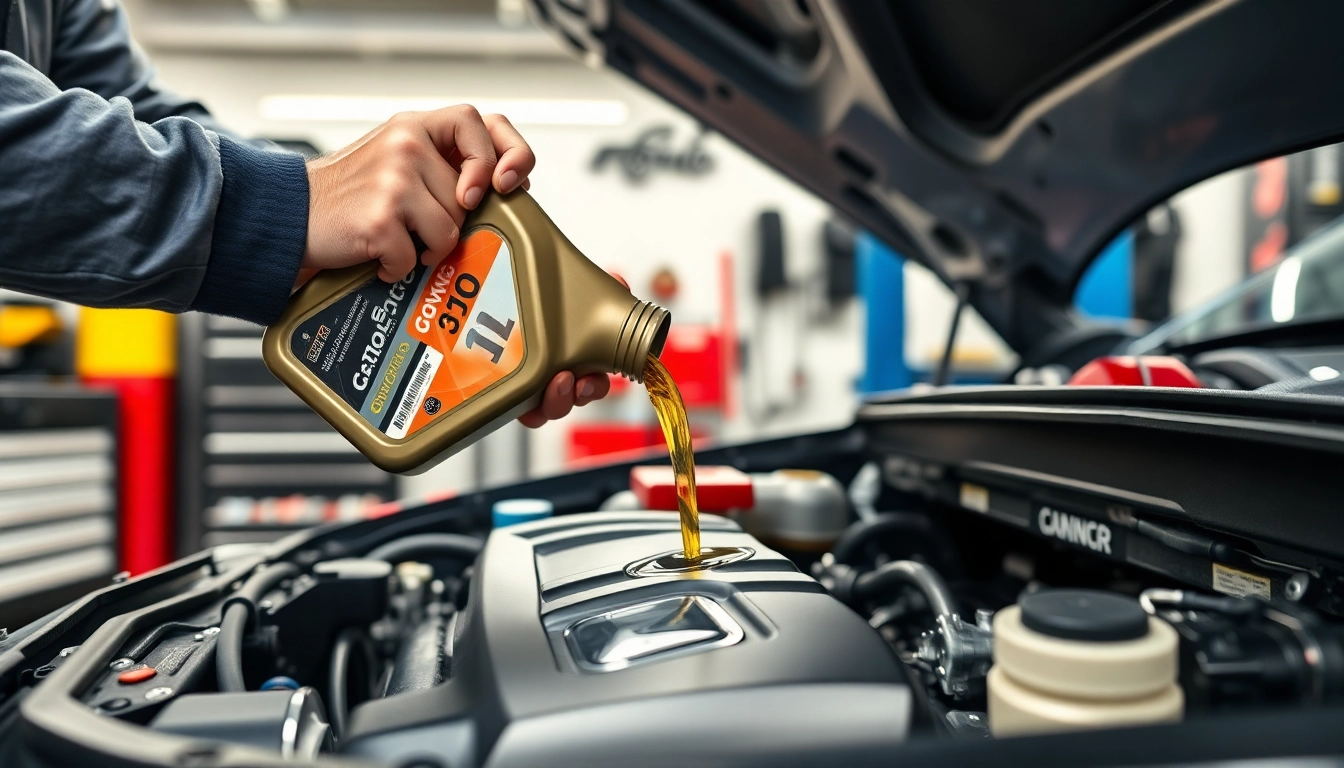Understanding 0w16 Oil
In the realm of automotive maintenance, the type of engine oil you use can have a profound impact on your vehicle’s performance and longevity. One such oil gaining popularity, especially among Honda vehicles, is 0w16 oil. This low-viscosity, high-efficiency oil is engineered to meet the operational needs of modern vehicles, ensuring optimal performance and fuel efficiency. Understanding the fundamentals of 0w16 oil is essential for any Honda owner looking to maintain their vehicle effectively.
The Importance of Motor Oil in Vehicle Performance
Motor oil plays several crucial roles in ensuring your vehicle functions smoothly. Firstly, it serves as a lubricant for the engine’s moving parts, reducing friction and wear. This is particularly important in high-performance engines that operate at higher RPMs. Secondly, motor oil helps to cool the engine by absorbing heat generated during combustion. Without adequate oil, engines would overheat, leading to costly repairs. Lastly, oil also acts as a cleaning agent, suspending contaminants and preventing sludge build-up, which can adversely affect engine performance.
Comparing 0w16 Oil to Other Oil Types
0w16 oil is designed to flow easily at cold temperatures (0), thus providing excellent protection for the engine during cold starts. This characteristic distinguishes it from higher viscosity oils, which may not perform as well under similar conditions. For instance, 0w20 oil, while also a low-viscosity oil, is thicker than 0w16 at operating temperatures. This can influence fuel efficiency; thinner oils like 0w16 can potentially enhance fuel economy by reducing drag on engine components. However, the choice between these oil types should align with the manufacturer’s recommendations for specific vehicles.
Benefits of Using 0w16 Oil in Honda Engines
Honda has tailored many of its engines to run optimally with 0w16 oil. This oil type not only enhances fuel efficiency but also provides superior protection against engine wear under various driving conditions. The use of 0w16 oil can result in reduced greenhouse gas emissions, making it a more environmentally friendly choice. Additionally, owners often notice smoother engine operation and improved throttle response, which translates to a better driving experience overall.
When to Change Your Oil
Understanding when to change your oil is crucial for maintaining the health of your engine. Oil change frequencies can vary based on many factors, including driving habits, vehicle type, and even the type of oil used. For 0w16 oil, a general guideline is to adhere to the manufacturer’s recommendations based on mileage and driving conditions.
Recognizing Signs That Oil Change Is Needed
Several indicators can signal that it’s time for an oil change. Common signs include an engine oil warning light, unusual engine noise or knocking sounds, decreased fuel efficiency, or a burnt oil smell. Moreover, checking the oil level and quality through the dipstick can provide insights; if the oil appears dark and gritty instead of clear and amber, it’s time for a change.
Recommended Intervals for 0w16 Oil Changes
Typically, Honda recommends changing 0w16 oil every 7,500 to 10,000 miles, depending on your model and driving conditions. However, those who frequently make short trips, drive in stop-and-go traffic, or operate their vehicles in harsh conditions may need to consider more frequent changes. Regularly following the manufacturer’s guidelines helps ensure optimal engine performance and longevity.
How Driving Conditions Affect Oil Change Frequency
Your driving environment can significantly impact how often you need to change your oil. Vehicles driven primarily in urban environments, where traffic congestion and stop-and-go driving are common, can experience increased oil degradation. Conversely, highway driving tends to be less taxing on the oil. Understanding these nuances can help owners tailor their maintenance schedules to their specific driving patterns.
How to Change 0w16 Oil Yourself
Changing your oil is one of the most fundamental automotive maintenance tasks any vehicle owner can undertake. With the right tools and knowledge, this process can be straightforward and rewarding.
Essential Tools for an Oil Change
Before beginning an oil change, gather the necessary tools: a socket wrench set, an oil filter wrench, an oil catch pan, a funnel, and, of course, the appropriate amount of 0w16 oil and a new oil filter. Safety gloves and rags for cleaning up spills are also recommended.
Step-by-Step Process for Changing 0w16 Oil
- Start by warming up your engine for a few minutes to thin the oil, allowing it to drain more easily.
- Turn off the engine and allow it to cool a bit before beginning the process.
- Locate the oil dipstick and oil fill cap. Remove the cap to allow airflow, which will help the old oil drain.
- Position your oil catch pan under the oil pan and remove the oil drain plug using the wrench.
- Let the old oil drain completely into the pan.
- Once drained, replace the drain plug securely.
- Remove the old oil filter with an oil filter wrench. Make sure to lubricate the rubber seal of the new filter with a bit of new oil before installing it.
- Install the new oil filter hand-tight.
- Using a funnel, pour in the new 0w16 oil through the oil fill cap, monitoring the level with the dipstick.
- Start your engine and let it run for a minute while checking for leaks. Afterwards, check the dipstick once more and top off if necessary.
- Dispose of the used oil properly, adhering to local regulations.
Common Mistakes to Avoid During an Oil Change
While oil changes are relatively simple, there are pitfalls to avoid. Ensure that the correct oil type is used, as some may mistakenly use a heavier oil, which can compromise engine performance. Over-tightening the oil filter or drain plug can lead to damage or leaks, and it’s essential to allow enough time for the old oil to drain completely to ensure all contaminants are removed.
Best Practices for Storing 0w16 Oil
Proper storage of motor oil is vital for maintaining its quality and efficacy. Knowing how to handle and store 0w16 oil can extend its life and ensure your vehicle is always ready for performance.
Proper Handling and Storage Techniques
Always store motor oil in a cool, dry environment away from direct sunlight. Keep the containers tightly sealed to prevent contamination and evaporation. It’s beneficial to store oil upright to prevent spills. Additionally, labeling containers with purchase dates can help manage oil shelf life effectively.
Understanding Oil Shelf Life
While the shelf life of unopened bottles of 0w16 oil can extend several years, once opened, it’s wise to utilize it within a year to ensure the oil retains its protective properties. Factors like temperature, exposure to air, and moisture can affect the quality over time, so keeping track is essential.
Recycling and Disposal of Used Oil
Disposing of used motor oil improperly can harm the environment. Always take used oil to a recycling center or an auto shop that handles oil recycling. Many retailers also participate in oil recycling programs. This not only helps keep the environment safe but often allows you to get a discount on your next oil purchase.
Troubleshooting Common Oil-related Issues
Even with diligent maintenance, issues can arise related to engine oil. Knowing how to troubleshoot these problems is crucial for every vehicle owner.
Identifying Oil Leaks and Their Causes
Oil leaks can result from various sources, including worn seals, damaged gaskets, or loose drain plugs. Look for fresh oil stains beneath your vehicle or dark spots on engine components. If you suspect a leak, it’s imperative to address it quickly to prevent further damage.
What to Do if You Use the Wrong Oil Type
If you inadvertently use the wrong oil type, it’s advisable to change it as soon as possible. Running on unsuitable oil can lead to inadequate lubrication, resulting in overheating and increased wear. Depending on how long the incorrect oil has been in the engine, a professional inspection may also be warranted.
Signs of Oil Degradation and How to Address Them
Signs of oil degradation include a change in color, decrease in oil level, or the scent of burnt oil. Regularly checking your oil using the dipstick can help identify these issues. If the oil appears dark and thick, it’s a clear indicator that it’s time for a change. Keeping up with regular oil changes and inspections can significantly mitigate the risks associated with oil degradation.























+ There are no comments
Add yours